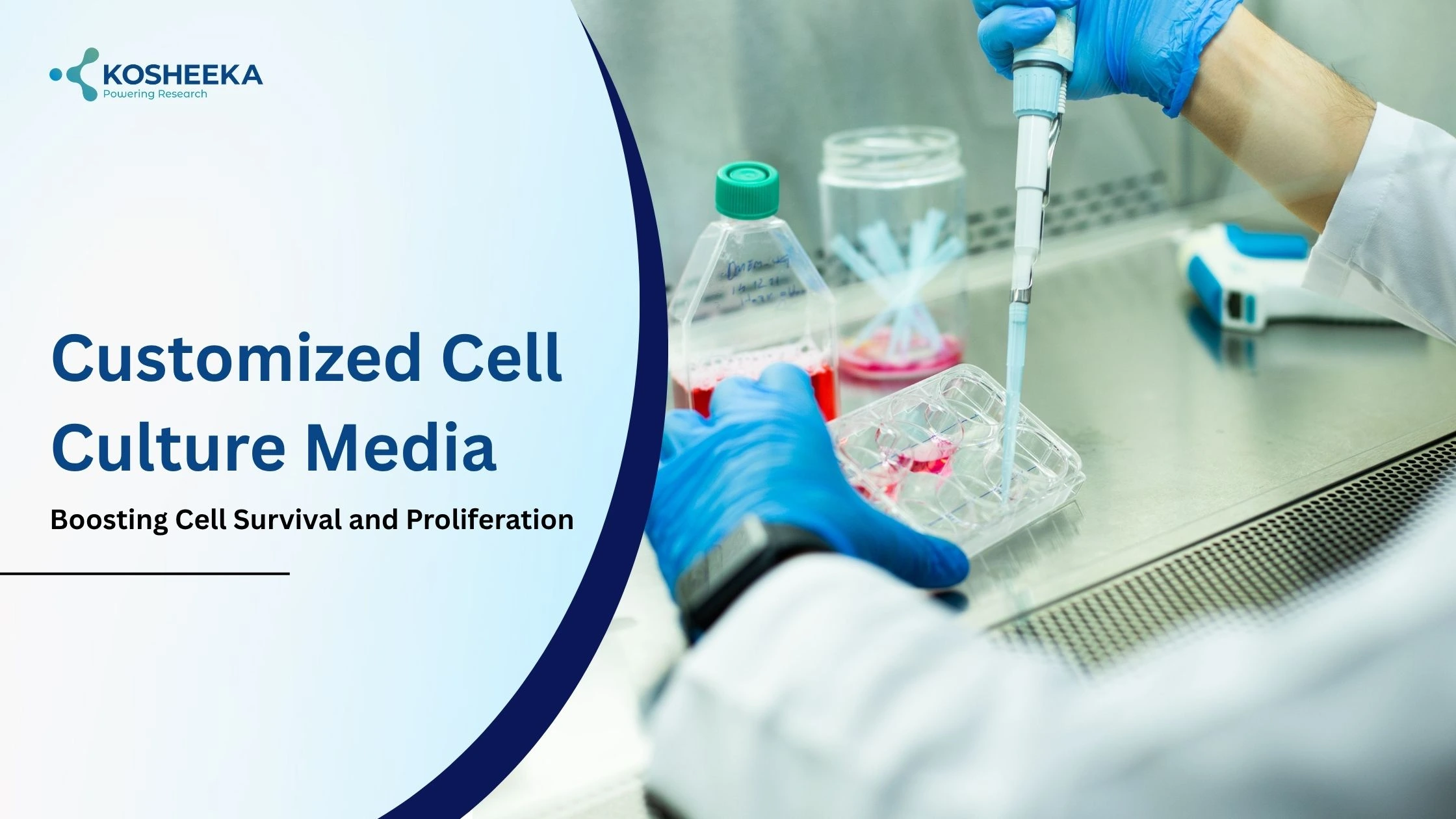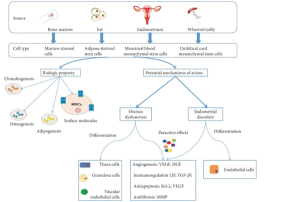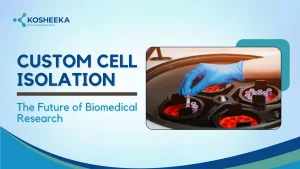In vitro research has accelerated the pace of biomedical research by enabling the study of cellular biology and disease pathology. It has significantly reduced the time and cost of drug discovery and development. In vitro study grows cells outside the body in an artificially controlled environment. The principal component of that environment is cell culture medium. Medium is a cocktail of nutrients and growth factors that ensures optimal cell survival, proliferation, and growth. With the growing use of cells specific to tissue, disease, or species, the need for customizing media has also increased. Customized cell culture media and disease-specific primary cells have drawn considerable interest for adding precision to the study. The tailored approach addresses the subtle biological differences between diseased cells and their media requirements. It can provide more accurate results with higher translational potential for therapy.
Customized Cell Culture Media
Researchers in the early days of cell culture research were attempting to identify specific media ingredients and their effects on cell growth. For example, Lewis et al. showed that amino acids, glutathione, and glucose can promote the growth of chick embryo fibroblasts. In 1955, Harry Eagle composed a minimum essential medium (MEM) containing balanced salt solution, serum, and only the necessary amounts of inorganic salts, vitamins, glucose, and amino acids.
It encouraged media customization according to cellular needs. Thomas A. McCoy formulated a medium for carcinosarcoma cell line, which Roswell Park Memorial Institute (RPMI) modified by altering magnesium and calcium concentrations tailored for lymphocyte cultivation. This practice is followed to this day by altering media composition in accordance with tissue, disease, and research objectives. These three factors define the cell metabolic needs.
Disease-Specific Primary Cells
Primary cells offer the advantage of tissue-specific traits and responses, thus boosting their use in cell culture research. In a similar manner, disease-specific cells retain the disease-based characteristics and the cellular response. They are extracted from patients or animal models of disease. These cells can offer more insights into the unique genetic and biochemical changes. For example, oncology research prefers patient-derived tumor cells instead of cell lines. The rationale behind this is the lack of cellular heterogeneity in cell lines that is present in tumors. Therefore, disease-specific cells can be more accurate models to study the signaling pathways behind disease, develop optimal therapeutics, and evaluate the drug efficacy. Some examples include pancreatic islets from diabetic patients, airway epithelial cells in patients with lung damage. They are particularly beneficial in identifying biomarkers (genes, RNAs, or proteins) for diagnostic and prognostic purposes.
Applications
Neurology:
Neural development has been an intriguing subject for scientists. The first cultured cells were frog embryo nerve fibers. Cultivating neurons, however, requires more than a typical medium. It might require growth factors such as NGF, BDNF, etc. Private cell culture companies have been providing supplements along with the basal medium. The supplement contains insulin, corticosterone, vitamins, selenite, etc., to prolong survival and assure optimal growth in culture. Researchers often derive disease-specific neurons from animal models of neurological disorders or from patients to dissect the underlying mechanisms for creating suitable medications. Additionally, the research on excitation response, immune response, and differentiation mandates certain changes in the medium.
Cardiovascular Research:
The rising mortality due to cardiovascular disorders has urged scientists to develop reliable therapeutics. The understanding of hypertension, atherosclerosis, and ischemia has significantly increased after comparing normal cardiomyocytes with their diseased counterparts. Cardiomyocytes are sensitive to Ca2+ ion concentration, entailing its proper regulation by the media. Creatinine, carnitine, and taurine are also essential for energy metabolism and muscle contractility. Cells from a damaged heart or vessels can be valuable to evaluate the process of fibrosis, testing drugs, and effects on electrophysiology. With the increasing incidence of mental stress and its association with heart rate, effects of hormones such as dopamine, adrenaline, cortisol, oxytocin, etc., on normal and disease cells are also a subject of investigation.
Regenerative Medicine:
Induced pluripotent stem cells (iPSCs) has opened new avenues in regenerative medicine. Furthermore, studies have found different stem cells residing in each tissue. Therefore, scientists are working in both directions- tissue-specific stem cells and somatic cells dedifferentiation into iPSCs. The media composition differs in both cases and at different stages. Media is supplemented with transcription factors during the dedifferentiation process into iPSCs. The differentiation process of iPSCs into desired tissue cells necessitates the addition of tissue-specific differentiating factors. On the other hand, the media for tissue-specific stem cells is altered to maintain their stemness activity and inhibit their differentiation.
Oncology:
HeLa cells were the first cancer cells cultivated in vitro. They were extracted from the cancer tissue of a cervical cancer patient and transformed the field of biomedical research. Unlike primary cells, they showed indefinite lifespan and higher growth rate, making it easier to culture them. It led to the creation of cancer cell lines in laboratories by genetic transformation. They are homogenous and could not recapitulate the heterogeneity of the in vivo tumor tissue. The impact of tissue and tumor microenvironment on cell signaling cannot be depicted in in vitro transformed cancer cell lines. Therefore, patient-derived tumor cells are nowadays preferred in culture. Their applications involve the identification of new markers such as cell surface proteins, mutations, and secretory proteins.
Personalized Medicine:
The variable response of patients to treatment has led the way for a tailored treatment approach. It involves modifying the dosage, duration, and drug according to an individual. However, to estimate the response to the treatment before administration. Patient-derived cells are the cell source for this evaluation. They can predict the cell behavior and changes in their pathways to strategize the treatment plan. Nowadays, researchers are stepping forward to create 3D organoids with them. It mimics the in vitro microenvironment of the disease tissue along with its signaling. Assessing drugs in such a 3D construct can offer information regarding the drug distribution in the tissue and its efficacy in the spatial and biochemical complexities. Therefore, the media should be modulated according to the cell growth and differentiation.
Product-Related Queries, Or Partnership Inquiries
Future Perspectives
The culture medium should adopt a novel approach to cater to the variations in cell types and 3D culture. The separation of components like serum and supplements from basal medium facilitates media customization according to cell type. However, with the increasing number of cell types isolated every year and the evolving cell culture process has compelled the formulation of new mediums. The formulation process should consider cost and reproducibility. It is especially for disease-specific cells that lack homogeneity across donor profiles. Disease-specific cell isolation faces its own challenges owing to the variation in donor characteristics. Several studies have reflected the impact of gender and age group. Therefore, a selective donor profile can notably elevate the research data and conclusions drawn. Kosheeka offers a selection of donor profiles for custom-specific primary cell cultures. We follow all the standardized protocols and provide expert guidance for cell culture.
FAQs:
Q – Why is customized media required?
Every cell type has different needs for survival and proliferation, therefore requiring media tailored to such needs.
Q – What are disease-specific cells?
These are cells derived from diseased tissue belonging to a patient or animal model of that tissue.
Q – Which is better- disease-specific or normal primary cells?
It entirely depends on the research objective. Disease-specific cells offer insights into pathogenesis and drug efficacy, whereas normal primary cells can be used to examine physiological processes and drug safety.
Q – How do research goals require a change in the media composition?
Experiments can aim to observe differentiation, enhance the production of a product, boost secretion of cytokines, or promote proliferation. In each case, the media composition is different as per the objective.



